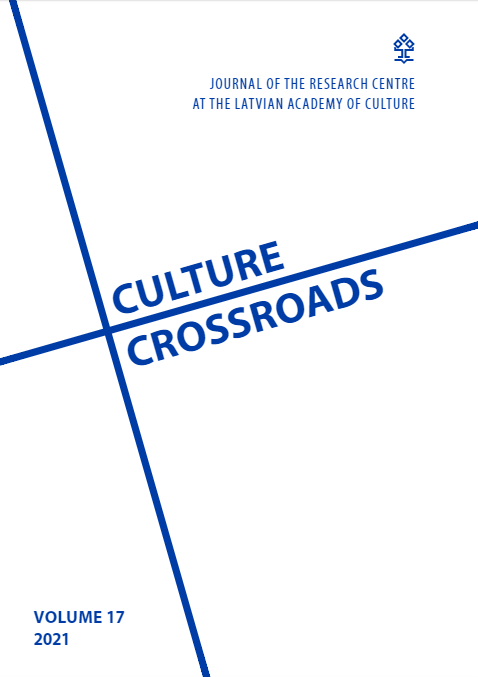THE ROLE AND IDENTITY OF LATVIAN EXILE ART IN THE UNITED STATES OF AMERICA: EXAMPLE OF THE STUDENT FRATERNITY “DZINTARZEME” OF THE ART ACADEMY OF LATVIA
THE ROLE AND IDENTITY OF LATVIAN EXILE ART IN THE UNITED STATES OF AMERICA: EXAMPLE OF THE STUDENT FRATERNITY “DZINTARZEME” OF THE ART ACADEMY OF LATVIA
Author(s): Agnija LesničenokaSubject(s): Fine Arts / Performing Arts, Cultural Anthropology / Ethnology, Higher Education , History of Education, WW II and following years (1940 - 1949), Post-War period (1950 - 1989), History of Communism, Migration Studies, Identity of Collectives
Published by: Latvijas Kultūras akadēmija
Keywords: Latvian national art; exile; the United States of America; fraternity “Dzintarzeme”;
Summary/Abstract: The year 1944/45 is inscribed on the pages of Latvia’s history as the time of the second occupation by the USSR, as a result hundreds of thousands of Latvian citizens left Latvia as refugees. Since the 1945 the development of contemporary Latvian art was tragically divided between the occupied native land and the free world. The period in exile from 1945 to 1952 can be called the “restoration period”, or the period of preservation of Latvian national values and art, when the continuation of the form of artistic expression during the period of Latvia’s independence took place in refugee camps in Germany. The issue of national art became more problematic after 1952, when the exile lasted and Latvian artists were scattered on several continents of the world, the question of the fate of the expression of Latvian national art became more topical. In November 1958, with an art exhibition in New York (USA), the Art Academy of Latvia student fraternity “Dzintarzeme” (“Amberland”), which was banned in July 1940 by the USSR, was renewed. There is reason to assume that “Dzintarzeme” can be called as one of the most purposeful associations of Latvian artists in exile in the efforts to preserve and popularize Latvian national art in the USA until 1973. The main purpose of this research is through the example of student fraternity “Dzintarzeme” to clarifiy the concept – what is Latvian national art in exile, what we can define as Latvianness in Latvian exile art, and also look at art development and its role in the society of exile Latvians in the United States of America where the most active community of “Dzintarzeme” was located.
Journal: Culture Crossroads
- Issue Year: 17/2021
- Issue No: 1
- Page Range: 128-145
- Page Count: 18
- Language: English

